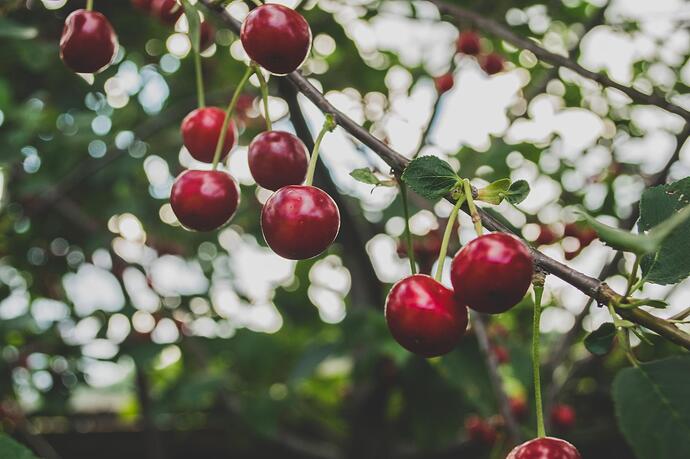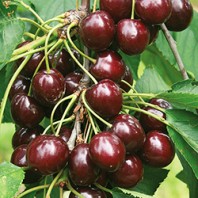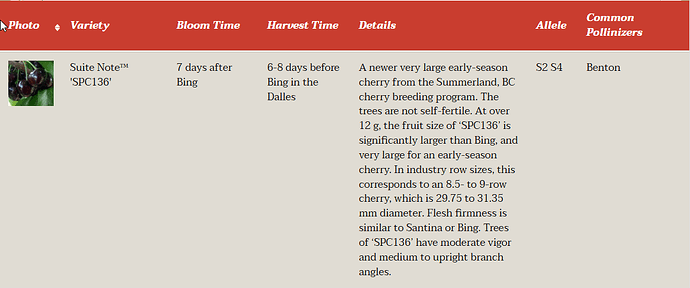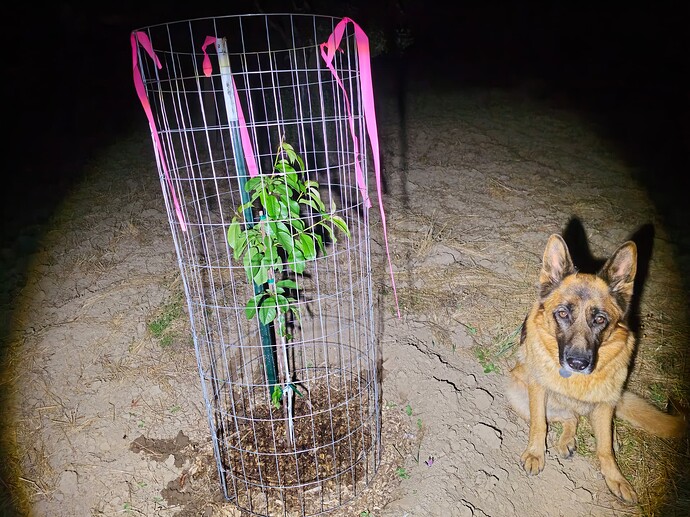Today I’ll take a few minutes to discuss two German varieties, which I consider tremendously interesting.
They’re like night and day, as they’re at opposite extremes.
As a background, I’ll tell you that there are currently three good programs for breeding new cherry varieties in Germany:
-
Cerasina Program by breeder Peter Stoppel
-
Julius Kühn Institute Program
-
LFP Program
Well, we’ll talk about two varieties, one ultra-early ripening and the other ultra-late ripening.
When I say ultra-early and ultra-late, the best way to provide you with their ripening dates is to use the Bing variety, which is your reference standard.
How do we calculate this?
Easy, since we use the difference between our standard that is Burlat, and yours that is Bing.
And we know for certain that Bing ripens 19 days after Burlat, so it’s easy to calculate.
So here we go.
- Narana
It’s an ultra-early ripening variety from the Julius Kühn Institute program.
Since I don’t trust the ripening dates offered by nurseries, I usually use the calendar offered by Plantgest, an independent organization dedicated to testing varieties for professional Italian fruit growers.
This is Narana’s ripening date:
So if it ripens 10 days before Burlat ( (you need to add 19 days to calculate its ripening date compared to Bing.)
And it ripens 29 days before Bing.
This is the most relevant information from its file, translated from German to English:
So, for impatient people eagerly awaiting the start of cherry season, this variety is incredibly good.
Now let’s look at the opposite extreme, the quality cherry more latest-ripening variety
(this one will surprise you).
- Kir Rosso
This is an ultra-late cherry variety from the LFP program.
Being a very recent variety, we only have the Graeb ripening calendar, which will be extremely useful.
This is the ripening date for Kir Rosso (see very very below ![]()
![]()
![]()
![]()
![]()
![]() )
)
We’re not interested in knowing when it ripens in Germany; what we’re interested in is its ripening date compared to our Burlat standard.
If you look closely, Kir Rosso ripens 60 days after Burlat (you now have to subtract 19 days to calculate its ripening date compared to Bing), so Kir Rosso ripens 41 days after Bing.
And I attach information on this variety.
I hope you enjoy this information about two varieties that are so opposite in the calendar.
Best regards
Jose


















